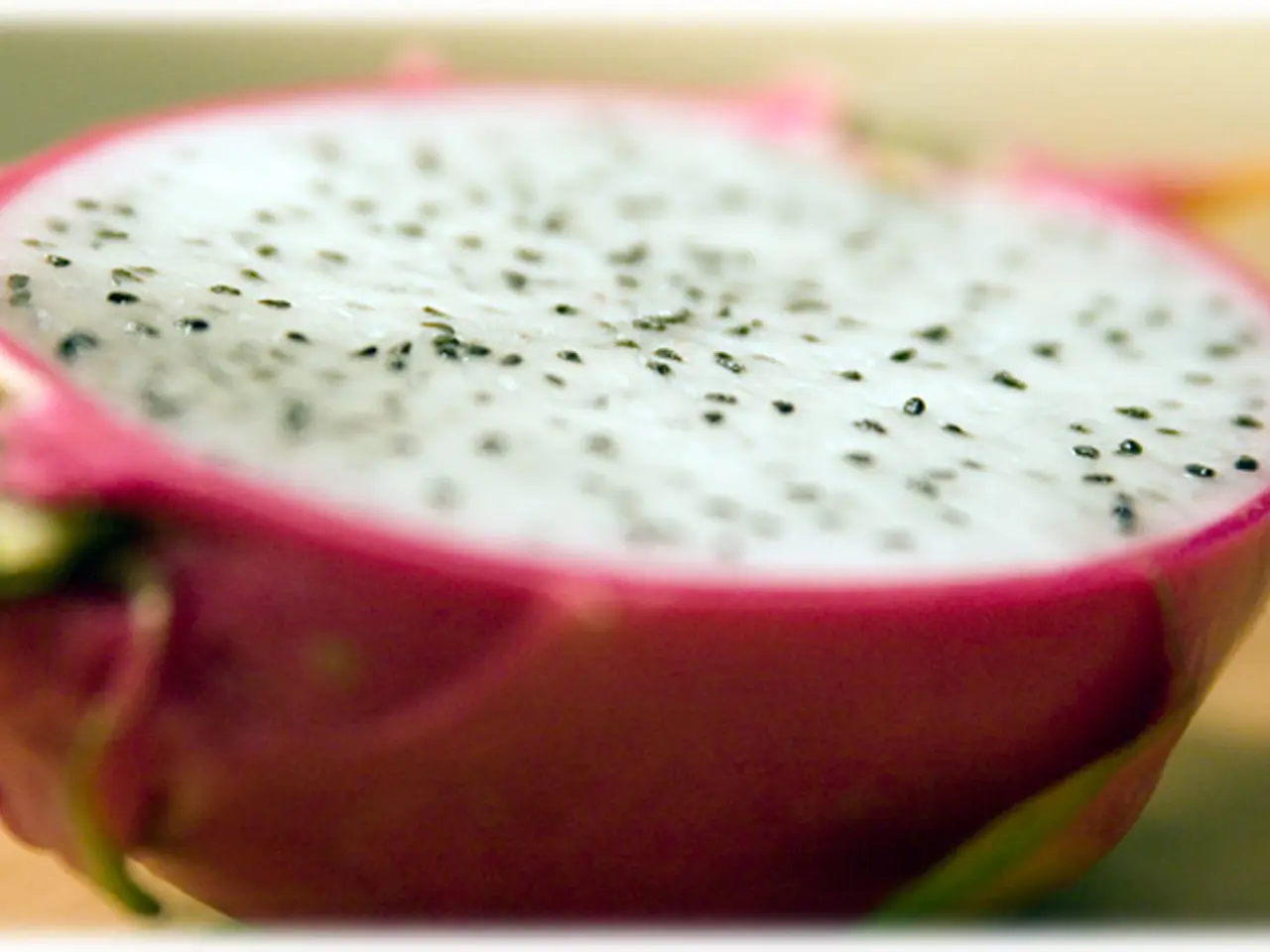Dragon Fruit Farming Proving Lucrative: Soaring Demand, Minimal Investment, and Government Aids Detailed; Find Out About Profits and Subsidies
In a significant move towards sustainable agriculture and income generation for farmers, the Indian government is actively promoting dragon fruit cultivation. This tropical fruit, known for its vibrant pink flesh and distinctive spikes, is ideal for water-scarce areas due to its low water requirement and ability to grow in poor soil.
Several states, including Maharashtra, Andhra Pradesh, Haryana, Uttarakhand, and Gujarat, are encouraging dragon fruit farming through various initiatives. These include training programs, research support, and financial subsidies. For instance, Bihar offers a 40% subsidy under the National Horticulture Mission, while Uttarakhand offers up to 80% under the 'Mission Dragon Fruit'.
The central government, under the Mission for Integrated Development of Horticulture (MIDH), plans to provide support for infrastructure, training, and planting materials. This comprehensive approach aims to expand dragon fruit cultivation from the current 3,000 hectares to 50,000 hectares over the next five years.
One successful farmer who has reaped the benefits of this initiative is Akbar Ali Ahmed from Chirang, Assam. He invested Rs 14-15 lakh per hectare to set up "Khidmat Agro Nursery & Farm" and now earns over Rs 1 crore annually from dragon fruit farming on 2 hectares. Mr. Ahmed also employs more than 20 locals and trains fellow farmers, thereby promoting sustainable agriculture in his region.
Dragon fruit farming offers a promising opportunity for Indian farmers, particularly in areas with challenging climatic conditions. The fruit has a high demand in both domestic and international markets, and its perennial nature ensures multiple harvests annually. To facilitate digital selling, dragon fruit has been listed on the e-NAM platform, making it accessible across the country.
Research bodies like ICAR are supporting dragon fruit cultivation through agronomic research, pest management techniques, and post-harvest processing workshops. These initiatives aim to improve the quality of the fruit and increase its market value.
For more information on government support for dragon fruit cultivation, visit the National Horticulture Board (NHB) website. Additionally, Gujarat provides assistance up to Rs 4.5 lakh per hectare, with enhanced support for SC/ST farmers.
In conclusion, the Indian government's support for dragon fruit cultivation, including financial subsidies, training programs, and initiatives to improve market access, presents a promising opportunity for farmers to diversify their crops and increase their income sustainably. The success stories of farmers like Akbar Ali Ahmed serve as a testament to the potential of dragon fruit farming in India.
Read also:
- visionary women of WearCheck spearheading technological advancements and catalyzing transformations
- Recognition of Exceptional Patient Care: Top Staff Honored by Medical Center Board
- A continuous command instructing an entity to halts all actions, repeated numerous times.
- Oxidative Stress in Sperm Abnormalities: Impact of Reactive Oxygen Species (ROS) on Sperm Harm








